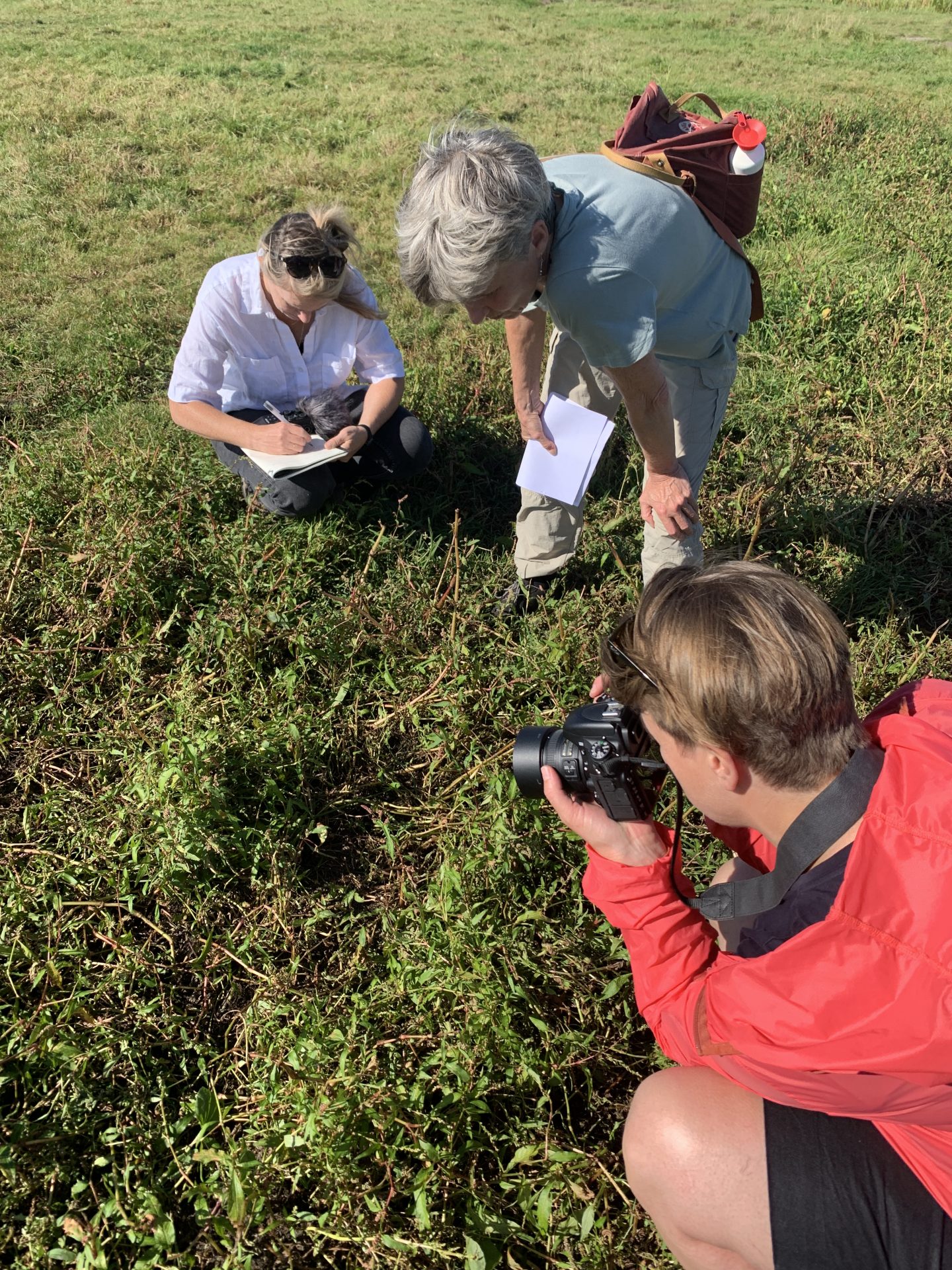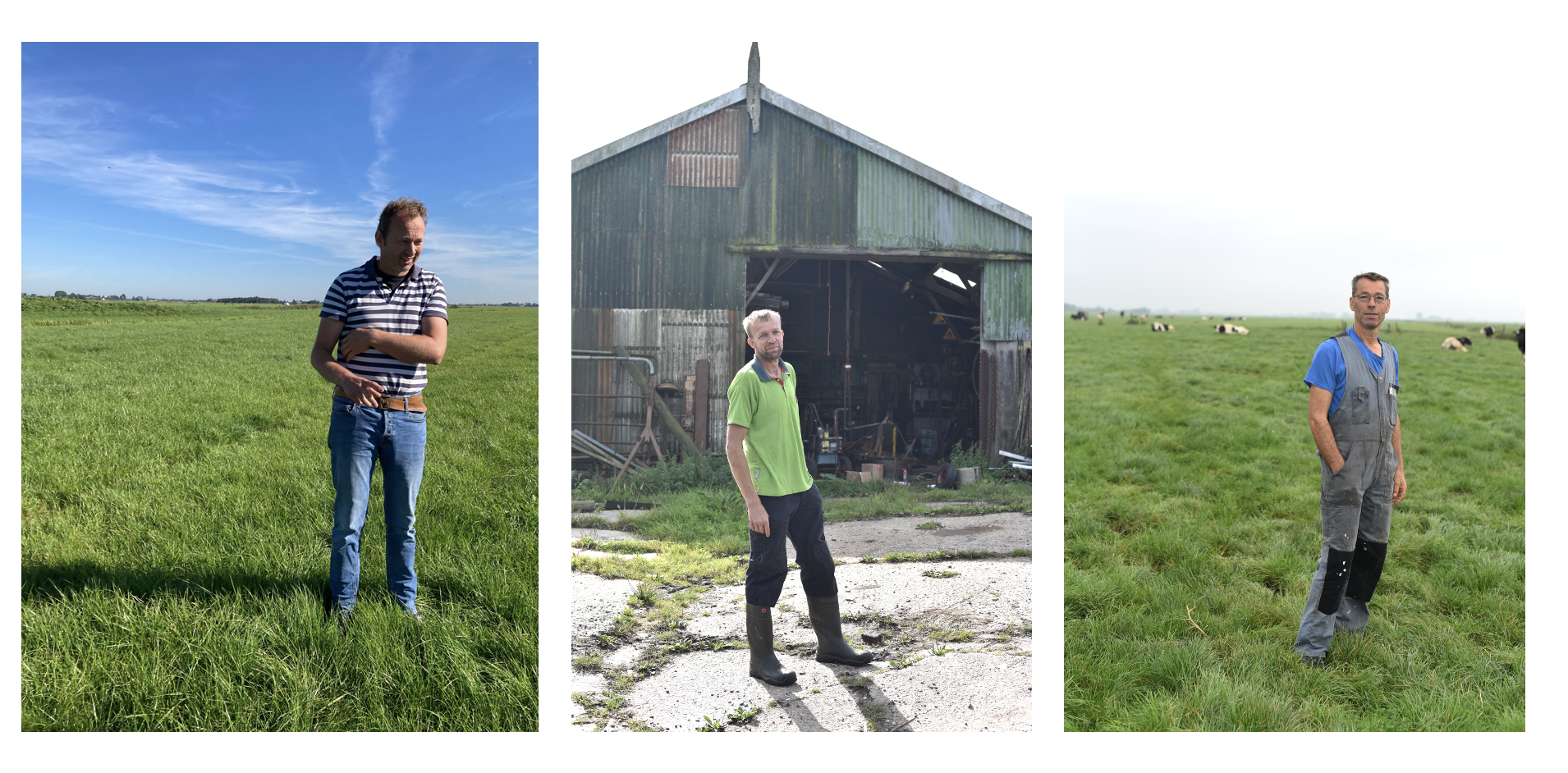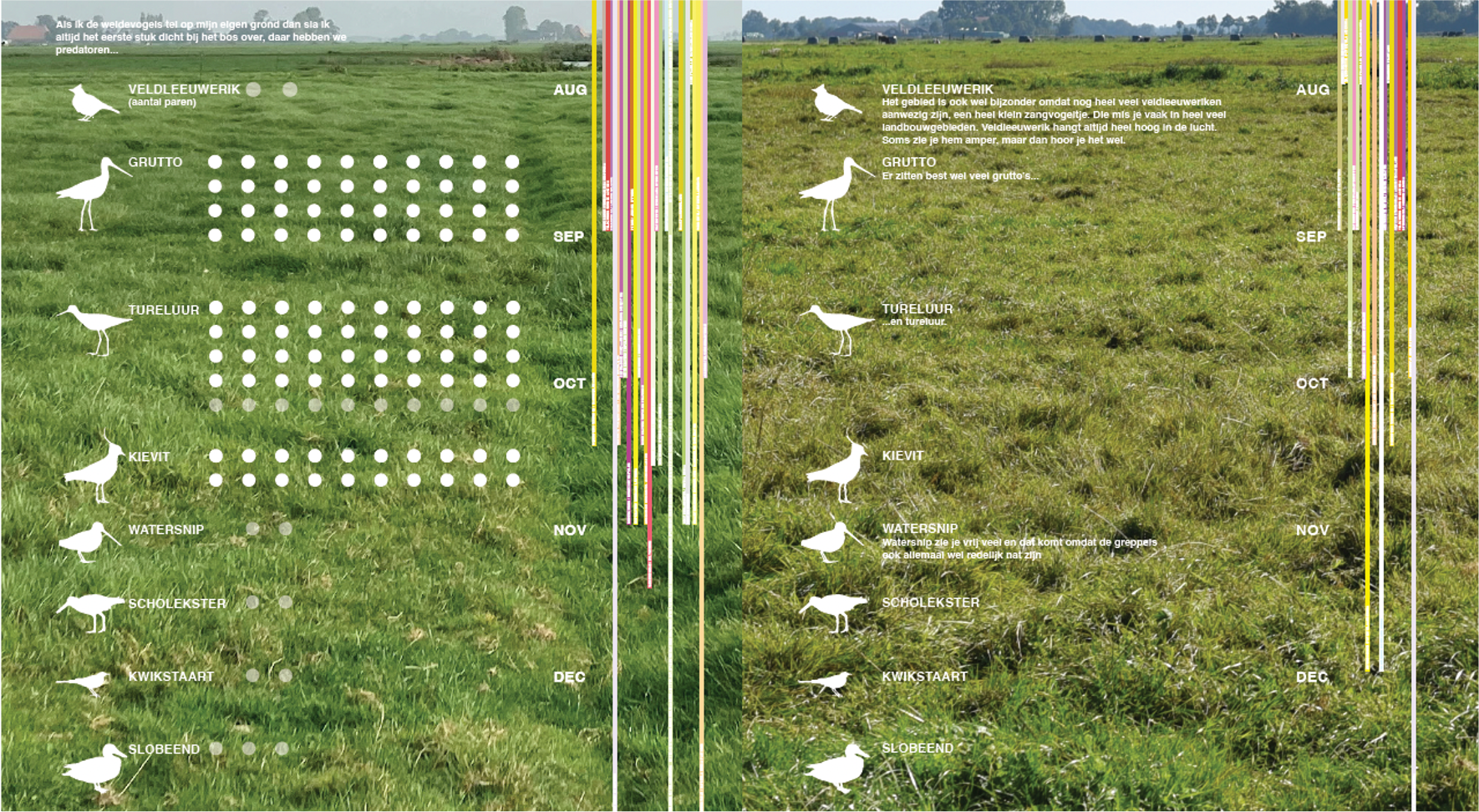Endless green grasslands – like the open sea – can appear monotonous at first glance. To the untrained eye, variation is hard to detect. Maybe a ripple in the wind or a difference in grass height. But that’s not the landscape’s reality – it’s our lack of knowledge that shapes how we see it. During their residency at the Veenweide Atelier, Lenora Ditzler and Janna Bystrykh set out in search of the peat meadow’s deeper story. They found it not in the wetlands or the waterways, but in the grasslands. We spoke with Lenora about the project.
a gap between farmers’ stories and policy narratives
“Our first visit to the region was a week-long journey,” Lenora recalls. “We spoke with farmers, historians and ecologists.” The aim was to get a feel for the place – to understand how people live and work in this landscape. While Lenora and Janna started with a focus on paludiculture (farming on wet soil) and the existing list of crops from the Common Agricultural Policy (CAP), the conversations soon revealed a much broader horizon of ideas about the future of the peat meadow.
They heard stories about cultivating herbal grasslands, seasonal land use, and about new ways of thinking that connect healthy soil, meadow birds and biodiversity. “The CAP list includes plants that farmers could grow as part of paludiculture,” Lenora explains. “Cattails, cranberries, wild rice. But in reality, few of the farmers we spoke with were growing them – or even interested in doing so.” Their conversations with ecologists and historians confirmed that these species have never been a natural part of the peat meadow’s ecology. And that history, Lenora says, is just as vital as the present if we are to shape a sustainable future for this landscape.

cropscapes
The one constant running through the story of the peat meadow landscape turned out to be the grass(land) itself. Instead of cultivating cattails or cranberries, several farmers in the area are practicing another form of wetland agriculture: managing their grasslands in ways that keep the water level high – 40 cm is the provincial goal. Yet just like agricultural policy is often made top-down, not from the perspective of farmers, a single plant is rarely used as a starting point for thinking about the wider landscape. “At least not outside of academia,” says Lenora. “We thought it would be exciting to do exactly that – to zoom in on a single plant and scale up from there, toward landscape and policy.”
That idea led to Cropscapes, a project in which Lenora and Janna mapped the herb-rich grasslands of several farms in the peat meadow region. They focused on three farms whose lands are adjacent. These are farmers who work with “old grass” – fields that haven’t been ploughed for decades, one of them not since the 1970s. These lands are uneven, showing traces of historic grooves and ridges. Lenora explains: “Farmers here were already managing their water levels 200 years ago, adjusting their dairy farms to the changing land. And these farmers are still doing it. At the same time, they’re integrating new ecological and agricultural insights. Their way of working supports soil health, birds and insects.”

wisdom of the farmer
The deep knowledge that farmers hold about their grasslands, crops and the (wild) birds and animals that live there, must play a central role in shaping future scenarios for the peat meadow region, say Lenora and Janna. “Livestock farming will naturally become less intensive on wetter land,” Lenora acknowledges. “But these grasslands can still be productive for dairy or meat. Biodynamic and organic products also tend to fetch higher prices.” Using parts of the land to grow species from the EU’s Common Agricultural Policy (CAP) list is another option. “All these combinations need to be explored to find out what a realistic path could look like. Not every farmer is a pioneer — some will follow later.”

connection and imagination
As part of the first, exploratory phase of their project, the team created a map of facts and statistics across three locations: an intensive farm and two ‘old grass’ farms. These maps include meadow bird populations, grass species, blooming periods, farming practices and water levels. Quotes and stories from the farmers bring the data to life. The team hopes to see the project evolve into different formats and media. “We would love to share both historical and contemporary knowledge about the peat meadow landscape more broadly — and highlight the vital role of farmers in shaping a realistic future vision.
The duo is also excited about how the Veenweide Atelier will continue to grow, and they see great potential in the collaboration among different designers. “I’m really enthusiastic about the creation of a physical meeting and research space for designers and stakeholders,” says Lenora. “Coming together, sharing ideas and seeing each other’s work makes imagining something new both easier and more joyful.”